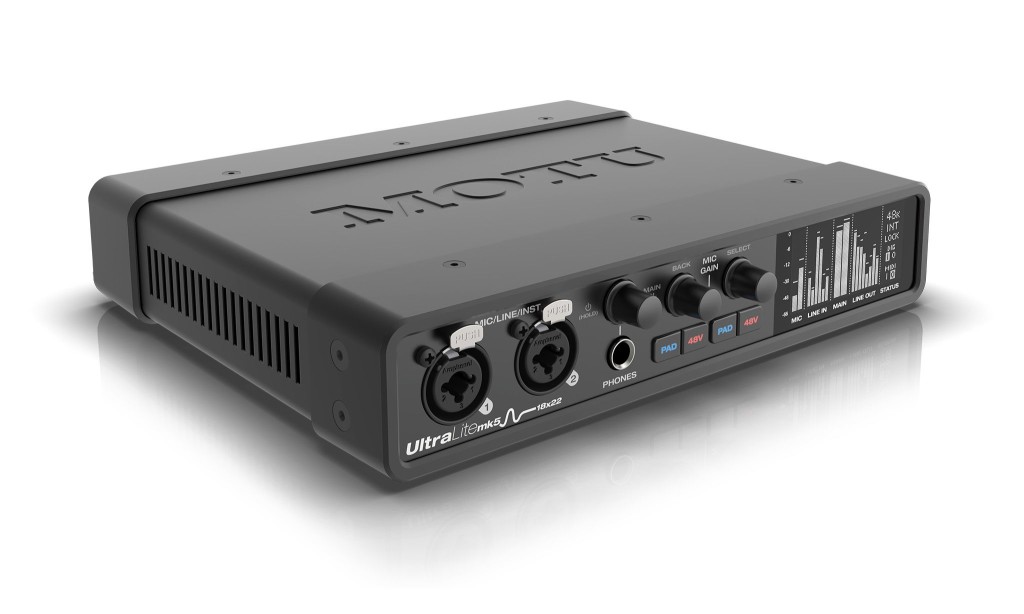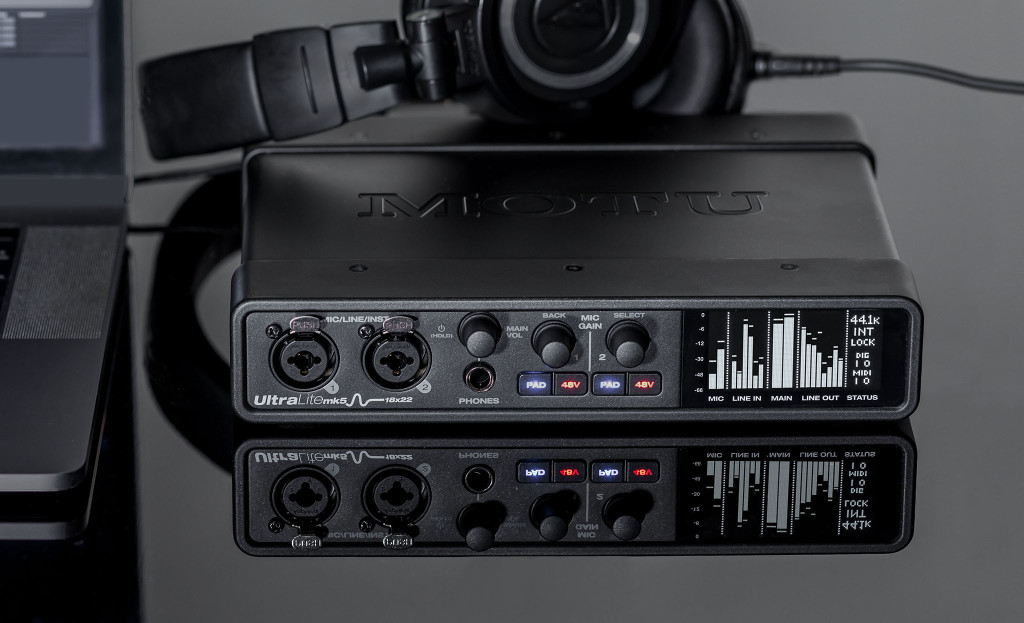The Mark of the Unicorn shines brightly. MOTU are here with a ground-up redesign of their blowout hit audio interface UltraLite (now on revision mk5). Combine that with expanded support on Apple platforms and a still-great driverless line, and you have a MOTU interface for just about any job.
I’m gushing for a reason – I know how many of you live on these interfaces, and how many more are in need of something like this.
Now, I’m not currently using an UltraLite. I’m a big, big fan of the MOTU M4 – it’s simple, has big visible meters and knobs (crucial when you need to just grab something and set a level), and it doesn’t require drivers. That means it also works on Linux as well as Mac, Windows, and iOS – which had previously been a complaint among Linux audio lovers, though the mk5 is now there, too. The M4 also has DC-coupled outputs, so it works with control voltage and modular. I bought one for myself, as it’s also stupidly inexpensive (just over $200) but still has great MOTU audio engineering.
Because the M2 and M4 don’t have drivers, you also didn’t need to worry about updates for Big Sur or Apple Silicon Macs (M1).
But I also know that the M2 and M4 don’t work for everyone, because some people need the expanded functionality and I/O of something like the UltraLite.
And so, on to the rest of the news:

UltraLite mk5 is now the box to beat
The UltraLite has always won affection for balancing a ton of I/O with portability. The audio interface market is so fragmented because people have such different needs, but this is the one that covers most of them for most people.

- 2 front-panel XLR/TRS combo-style mic/line/hi-Z guitar inputs with preamps (+74 dB of gain)
- 6 x 10 balanced quarter-inch analog I/O
- 8-channel ADAT optical (switchable to stereo TOSLink)
- stereo RCA S/PDIF I/O
- MIDI in/out
And it’s US$595. USB-C, but you can still plug it into USB 2.0, 3.0, and iOS – so this thing isn’t a brick.
Like the M2/M4, it is class-compliant, so you don’t have to buy a separate interface for that Raspberry Pi effect you built, or the high-end Linux graphics workstation that needs a sound interface.
The key there, and what’s missing on the M2/M4, is having ADAT. There’s already enough for most project recording or mobile use, but when you need more, you can add the ADAT to a digital mixer (for example).
It’s a tough time to talk about some high-end gear because the world economy is hurting and there’s still such pandemic uncertainty. But the UltraLite seems like a solid investment that is ready for a lot of that unpredictable work.

What’s new on the mk5? Ground-up performance improvements, which MOTU have been busy with lately:
- New high-res, high-contrast white OLED display
- Updated DACs on all analog outs – it’s the ES9026PRO DAC which MOTU says delivers 125 dB range
- -129 dB Equivalent Input Noise (EIN) on the mic ins
- Reengineered native CueMix 5 software for macOS, Windows 10, and iOS
Full specs: https://motu.com/en-us/products/gen5/ultralite-mk5/specs/
Product page:
motu.com/products/gen5/ultralite-mk5
And hey, that new CueMix does look really, really nice. That’s been a deal breaker on some software mixing tools I’ve seen – the last thing you want is a new mixing interface to learn when you just want to get a job done. This looks clear and easy – like something you’d enjoy using, I dare say. But it’s there to do things that would be hard on a front panel – setting up independent monitor mixes, adding EQ, gating, compression, and reverb, and the like.
There’s also Digital Performer Lite, meaning this whole package is great for education – it’d be an easy way to add a one-seat audio production station anywhere.




Expanded Apple platform compatibility
MOTU quietly added a slew of support for Apple’s new chips – Apple Silicon, which for now is the M1 – and their latest OS, macOS Big Sur. This also dropped yesterday.

https://motu.com/en-us/news/motu-and-macos-big-sur/
- UltraLite-mk5 is fully compatible with both Big Sur and M1.
- M2 and M4 always worked in class compliant mode, but now they also have a new M series driver for lower latency performance and loopback channels under Big Sur. (Confuse people by plugging an M2 into your M1 into Apple reveals a chip they call the M1!)
- More pro audio drivers. Latest-gen drivers are available for (deep breath) 1248, 112D, LP32, 8M, Stage-B16, UltraLite-mk4, 16A, 624, UltraLite AVB, 24Ai, 8A, 828es, 24Ao, M64, 8pre-es, Monitor 8, and 8D
We’re still social distancing even after vaccination, or I’d suggest a really mean trivia/drinking game involving I/O specs and MOTU’s interface line, in some Cambridge pub.
Incompatible – MIDI interfaces, Digital Performer, virtual instruments are all still a work in progress for Big Sur.
(Note that MOTU lists that issue as Big Sur, not the new Apple Silicon – the OS has tended to be the first stumbling block industry wide.)
Maybe compatible – there are some interfaces also with ongoing testing for Big Sur – both Intel and M1 Macs. Check the installation instructions.
Let us know what you’re using and how it’s working for you!